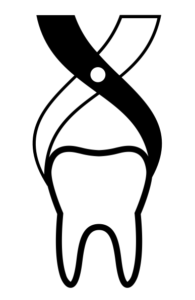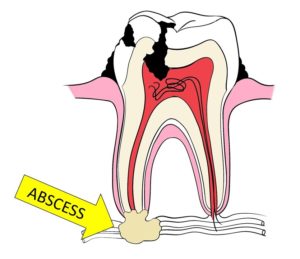How to Get Rid of a Tooth Infection
 In the past, most people believed that a toothache was just a toothache, with little effect on the rest of the body. A quick search of the news, though, will show you that this is a dangerous myth. Tooth infections can kill you. It only happens rarely, but it does happen. Here’s what you need to know to ensure that never happens to you or a loved one.
In the past, most people believed that a toothache was just a toothache, with little effect on the rest of the body. A quick search of the news, though, will show you that this is a dangerous myth. Tooth infections can kill you. It only happens rarely, but it does happen. Here’s what you need to know to ensure that never happens to you or a loved one.
Different Types of Tooth Infections
In general, we can break tooth infections into two categories based on the location of their source. All dental infections are caused by disease-causing bacteria, which penetrate either beneath the gums or into the tooth itself.
-
Periodontal Infection
A periodontal infection is one that begins on the external surface of a tooth by bacterial accumulation under the gums. This type of infection destroys the bone, ligaments, and gums surrounding a tooth. Because it affects the attachment to the tooth and not the tooth itself, the teeth surrounded by a periodontal infection can be completely healthy. Interestingly, it is common for periodontal infections to cause no pain at all.
-
Pulpal Infection
The pulp is the soft tissue containing nerves and blood vessels within the hollow interior space of each tooth. This tissue can suffer from an infection as the result of large cavities or cracks in a tooth, which allow bacteria to penetrate the enamel and work their way to the internal surface of the tooth. Infection within this closed space often causes extreme pain. Over time, the bacteria within the pulp will grow and spread to the outside of the tooth through a tiny pore at the tip of each root. Once spread outside the tooth, this infection will also destroy the bone surrounding the tooth beginning at the tipi of the root.
Options for Treating Tooth Infections
Dental treatment is necessary to stop the spread of these infections. Without treatment, the risk of spreading to vital areas like the airway, bloodstream, and brain increases.
-
Extraction of the tooth
 Removal of the offending tooth is always an option. There are some cases in which it is the only option. In a periodontal infection where extensive surrounding bone loss is present, it can be impossible to re-grow enough bone to stabilize the tooth. With pulpal infections, you must have enough healthy tooth structure left outside of the gums to support the dental treatment that will allow the tooth to function normally. If the tooth is severely damaged by large decay or cracks, restoring it may be impossible.
Removal of the offending tooth is always an option. There are some cases in which it is the only option. In a periodontal infection where extensive surrounding bone loss is present, it can be impossible to re-grow enough bone to stabilize the tooth. With pulpal infections, you must have enough healthy tooth structure left outside of the gums to support the dental treatment that will allow the tooth to function normally. If the tooth is severely damaged by large decay or cracks, restoring it may be impossible.
-
Periodontal treatment
Periodontal infections often respond well to periodontal, or gum, treatments that remove the bacterial buildup underneath the gums. Because this bacteria is the source of the infection, cleaning it from the surface of the tooth may allow reattachment of the gum tissue and surrounding bone. In more severe cases, gum surgery is necessary to remove all of the bacteria, and bone grafting can aid your body in regrowing bone around the tooth.
-
Root canal treatment
When the source of the infection is within a tooth, a root canal treatment is the only option that will save the tooth. A root canal treatment removes the infected tissue and bacteria from the internal chamber of a tooth and seals it with a biocompatible filing. In most cases, the root canal treatment is not the only treatment necessary to “fix” the tooth. Most teeth need to be covered by a crown after a root canal, in order to return them to natural shape and function.
Why Antibiotics are not Enough
 Dental infections are different from many other infections in the body. Unlike a sinus infection, where a prescription of antibiotics will take care of the problem, a dental infection cannot be “cured” with antibiotics alone. Antibiotics are often helpful in reducing pain and helping your body fight the infection. Because they do not remove the source of the infection, they are not enough.
Dental infections are different from many other infections in the body. Unlike a sinus infection, where a prescription of antibiotics will take care of the problem, a dental infection cannot be “cured” with antibiotics alone. Antibiotics are often helpful in reducing pain and helping your body fight the infection. Because they do not remove the source of the infection, they are not enough.
In both cases of dental infections, the source of the infection is an accumulation of bacteria on either the external or internal surface of a tooth. The short answer is that antibiotics cannot get to these bacteria. Those on the external tooth surface live within hard tartar buildup that attaches to the tooth’s root. The only way to remove it is by physically scraping it away from the tooth.
Those inside a tooth are unaffected by antibiotics and continue to produce toxins until they are physically removed via a root canal treatment.
An extraction of the infected tooth removes any bacteria without and within a tooth, so it also stops a dental infection.
Antibiotics do work in the surrounding bone and gum tissues, so they will relieve pain and swelling from a spreading dental infection. The problem is that once that round of antibiotics wears off, if the source of infection is still present, the infection can return at any time.
Dental treatment is the only way to STOP a dental infection.
Do You Have a Tooth Infection?
Don’t let it ruin your Christmas! Call Designer Smiles today to schedule a consultation with Dr. Ann and Dr. Lauren to discuss your treatment options and stop the infection before it stops you.
